Re-Winding Compressor (2020)
MiniDV, VHS, Video Signal, Glitch Media, Media ArchaeologyStarting as a glitch media experiment with videogame play recordings,
I used my MiniDV camcorder as way to produce artifacts for digital images. In
the same period of time, I was also recording the motion of VHS tapes moving
backwards and forwards which have their own respective degraded image quality
depending on the helictical scanning of tape rewinding or fast forwarding. But
even MiniDV as a digital tape format produces distortion due to the pan
left-to-right passing over being seen as a diagonal slice with large squares of
pixels being missed creating a jig sawing of the video image. In the case
of the original Tekken play through seen above the actual AV signal is recorded
to DV format normally. Afterwards the cameras deck playback controls can be
spooled through and captured to a computer.
The result is mixed of blocks of pixels as frames are
blended together in a discontinuous progression due to the fact that winding
drops frames visibly. It is immediate noticeable that obsolete image quality of
polygon animation seemed to fit in well aesthetically with the glitching. More
importantly as I watched the video it became clear that despite actual
information loss the outcome was still knowable due to elements such as the
timer, health bars remaining relatively static and general motion and hits can
be discerned. I then added back in the audio track of the Tekken play through
and then normalized the audio and video media to return them to a standard rate
rather than the x4 multiplying speed of the tape winding through.
This notion of an acceptable amount of information loss due to transference resulting in a different translation stoked an interest for a media archaeology project. I imagined a reality in which compression of data is not stored on digital hard drive disc but takes place on linearity of magnetic tape. An imaginary form of compression based on mechanical scanning rather than digital analysis. The reel borrowed from film and earlier thread is itself a compression method for storing physical media. Magnetic tape was also once an optimal method for storing and running files on a computer with floppy discs. But movie consumes a large amount of material and space no matter the format. In order to maximize the capacity of videotape what if the rate at which it is played is sped up generating a shorter visual segment.
Therefore I wound through the film Species (1995) twice. Once on VHS which was recorded on to MiniDV. Then the MiniDV was transferred to a computer. Then what if a computer program could restore the original time length of film? On the right is the MiniDV recording running at its high-speed frequency. The video recording on the left shows the same file returned to its standard length with normal audio re-introduced. What we get is a terrible jigsaw of scenes overlapping once another and the audio track becomes a crucial guide to the understanding the image. In the case of imaginary media, I don’t think there’s a society that would accept this from of compression as being optimal. However, the glitched video result does yield an entirely alien message when looking at text.

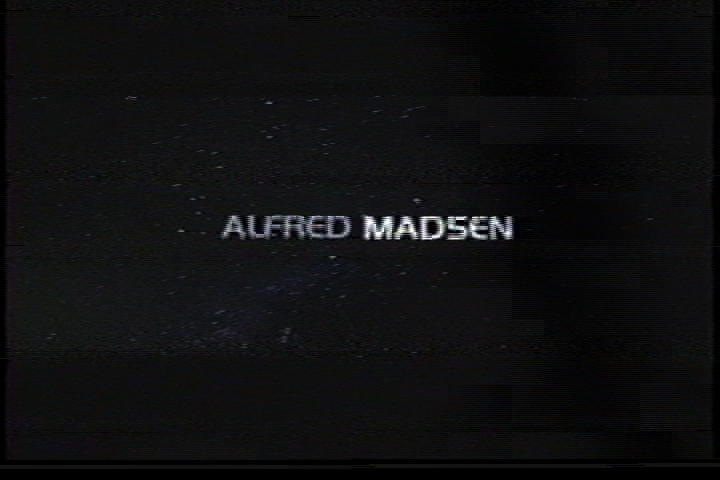
The actor Michael Madsen is the screen name for the actual actor in the actual film Species. “Alfred Madsen” is a new actor name in the compressed version of the same content. The text characters of Michael Madsen have been spliced with Alfred Monilla, the bane of another actor in the movie. The point is not that we should call either actor by a different name. Rather if we accepted the video a viable copy this frame is now acceptable knowledge. This text is now an actual message of a new sort.
After observing this I chose next to
process a foreign film for its subtitles. Masaki Kobayashi’s Samurai Rebellion (1967) makes a strong case for a non-fluent listener who cannot rely on the
Japanese dialogue and instead reads the textual messages beneath the image.
Below are some examples in which the message is both preserved, lost, and mixed
up.
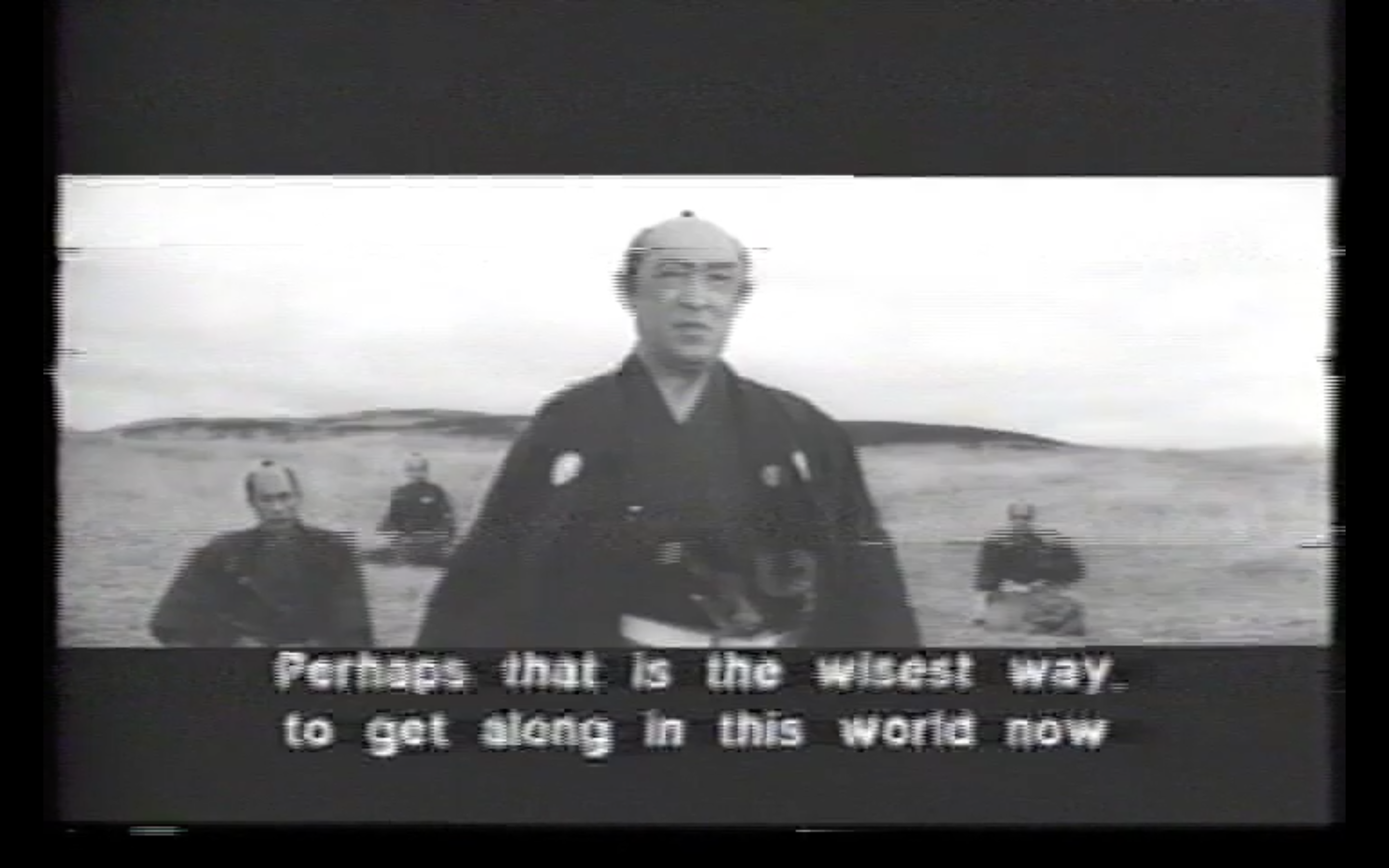
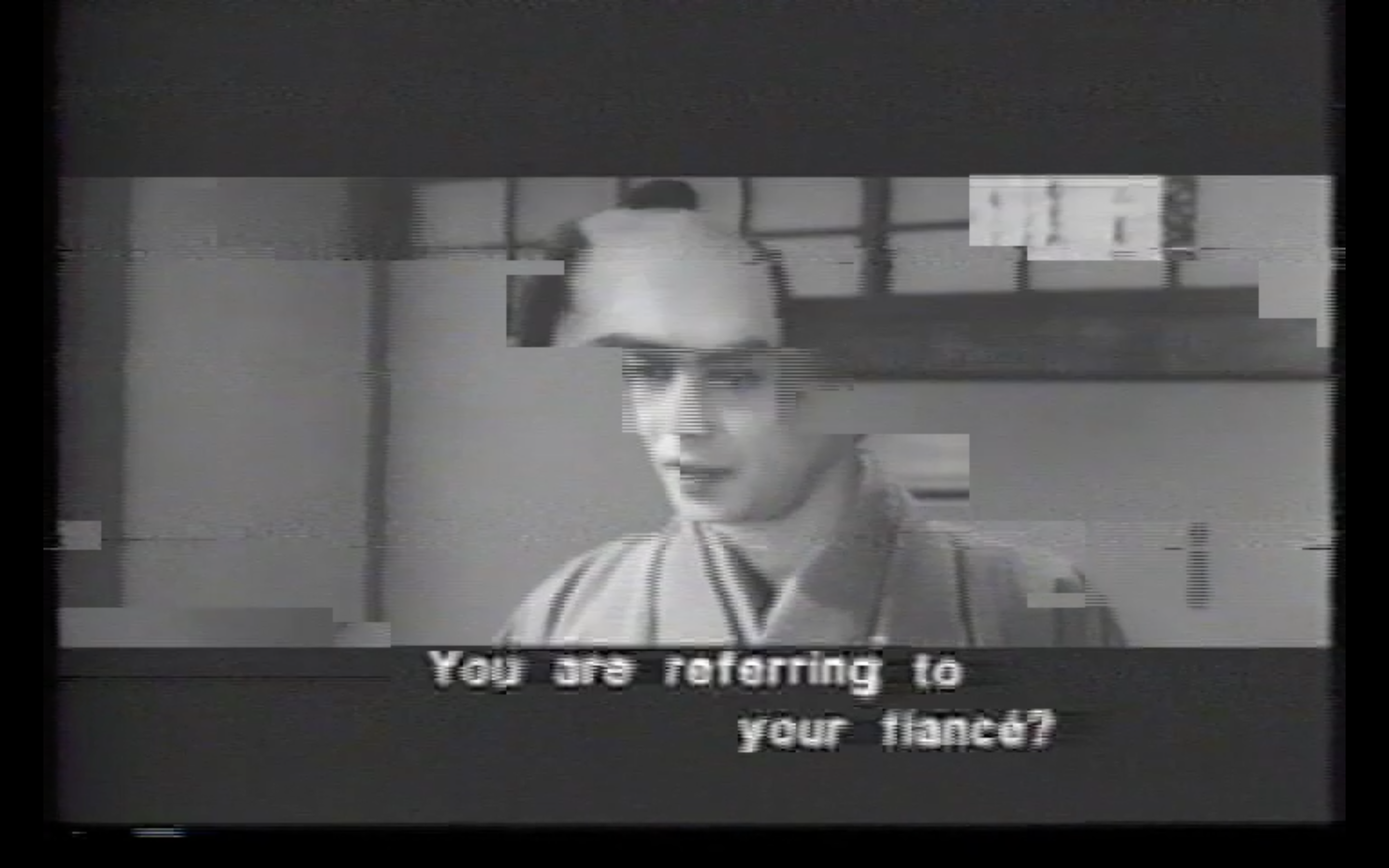


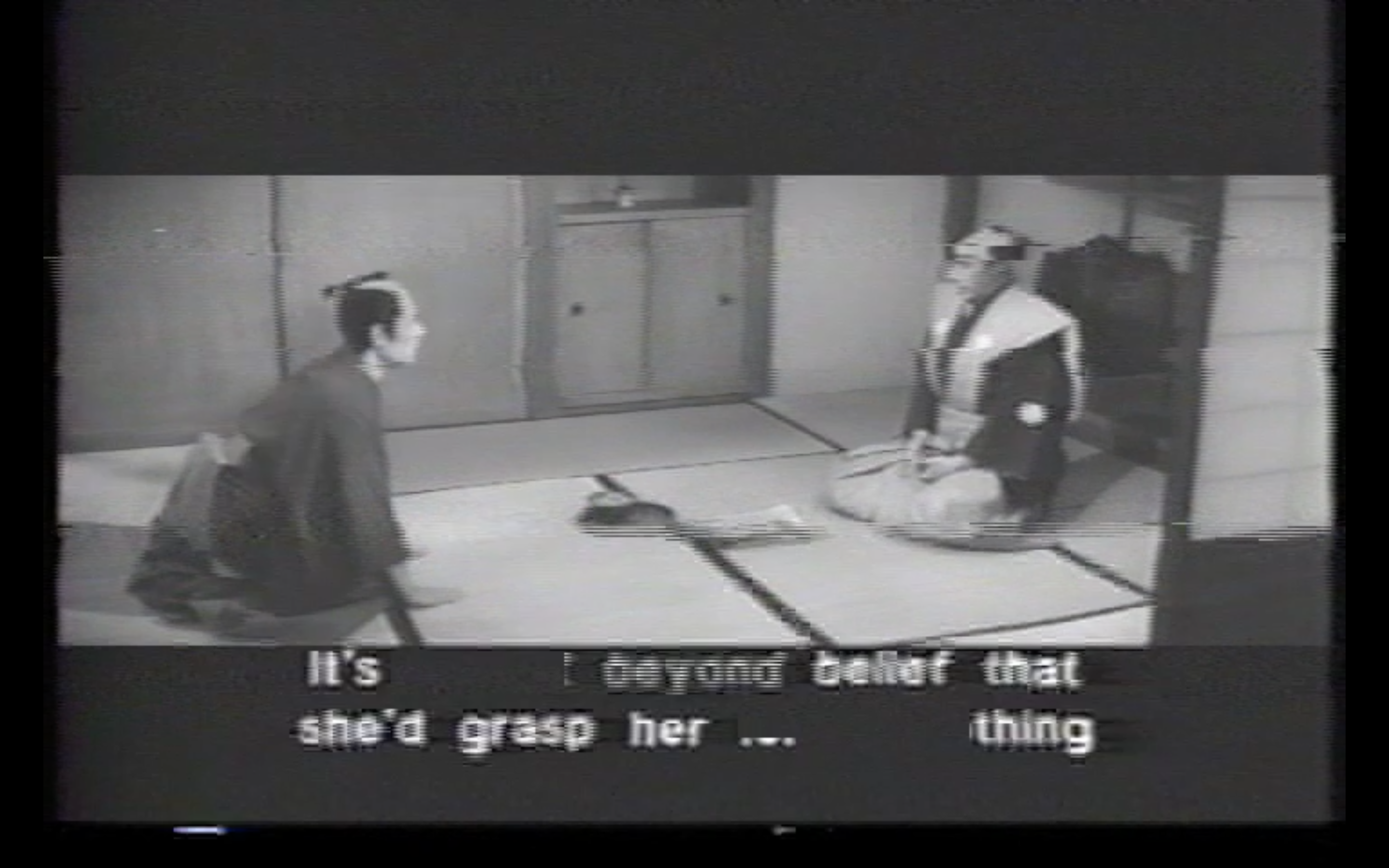
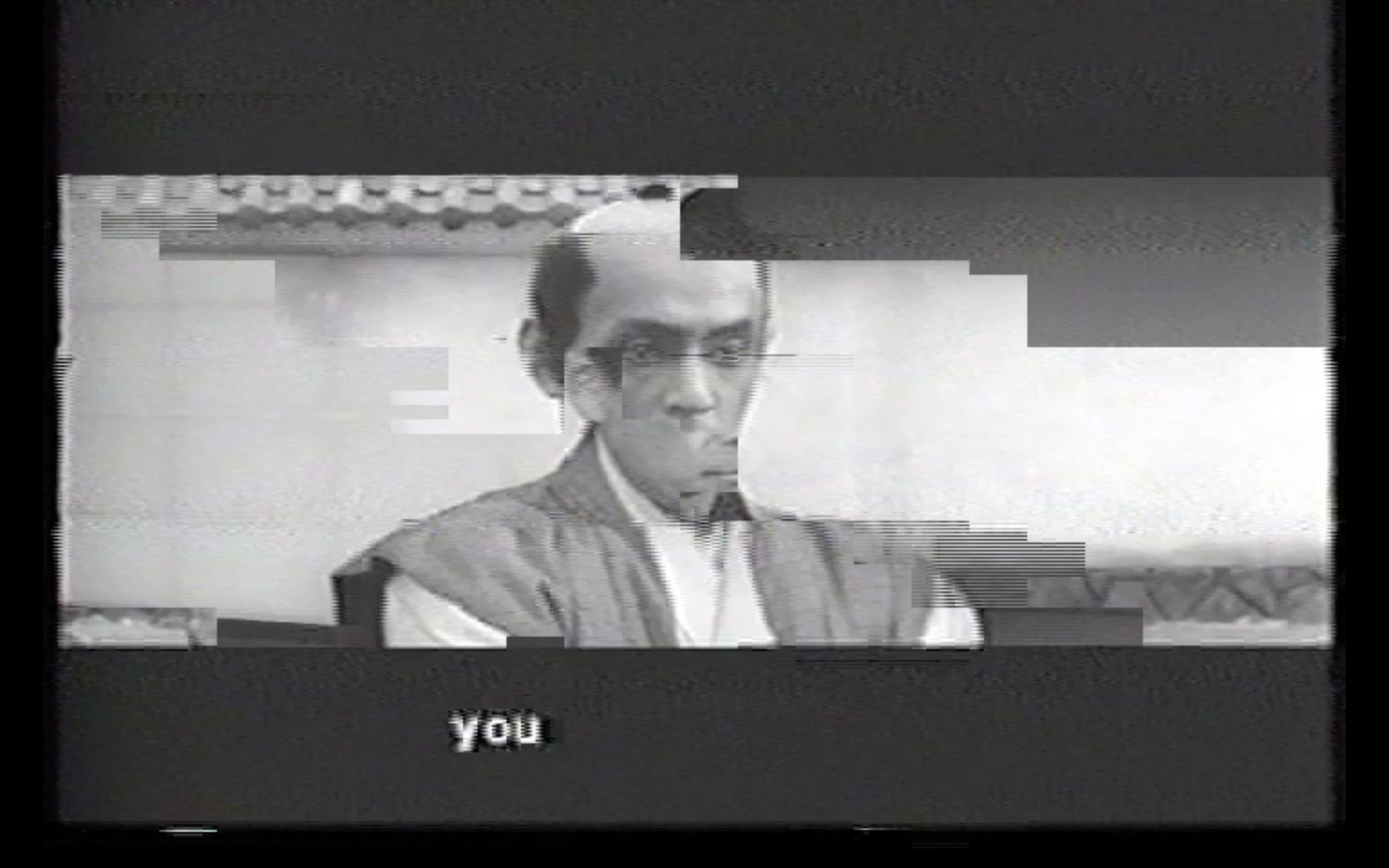
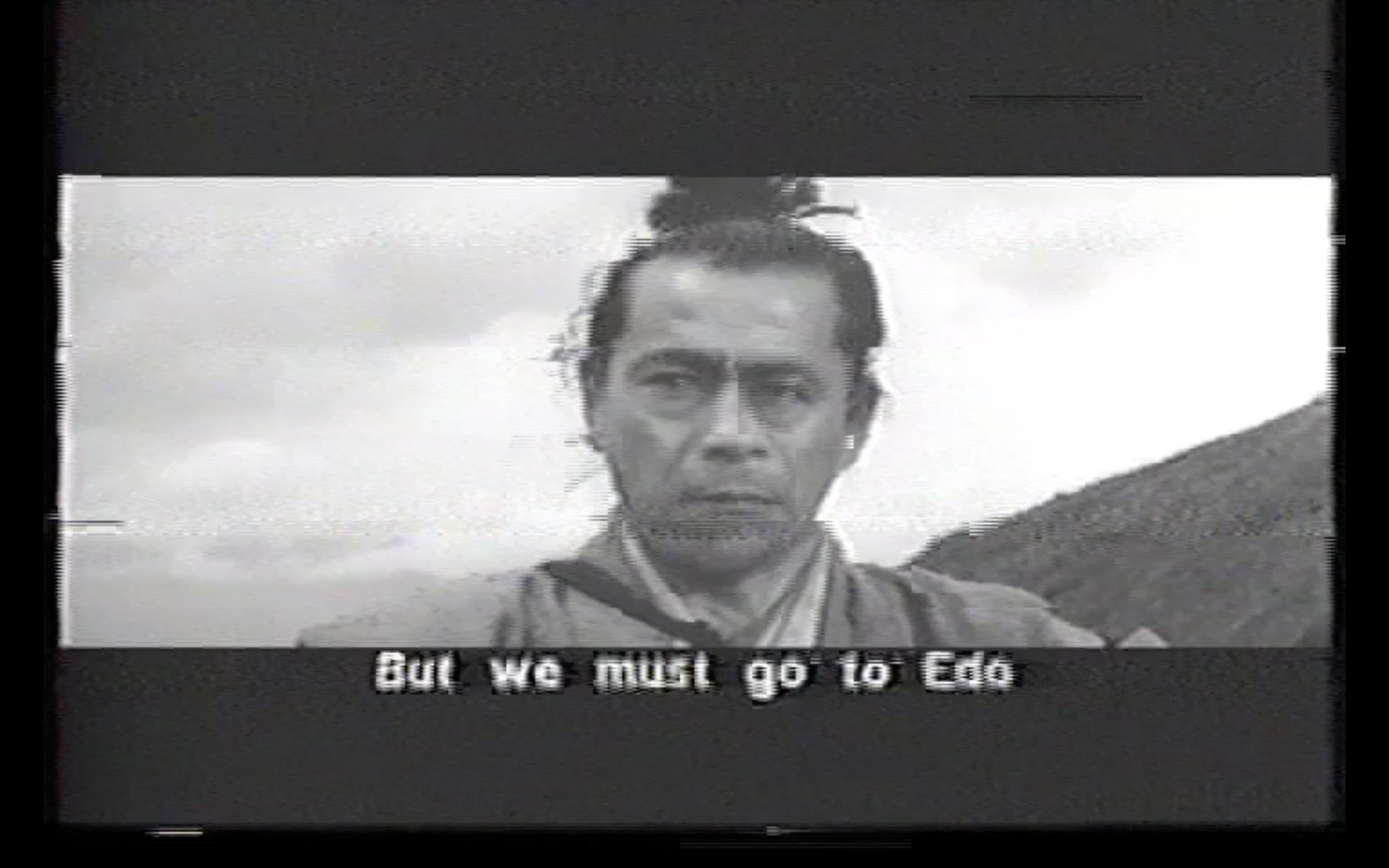


The progression of cuts and visual expression is contrastable in a new way
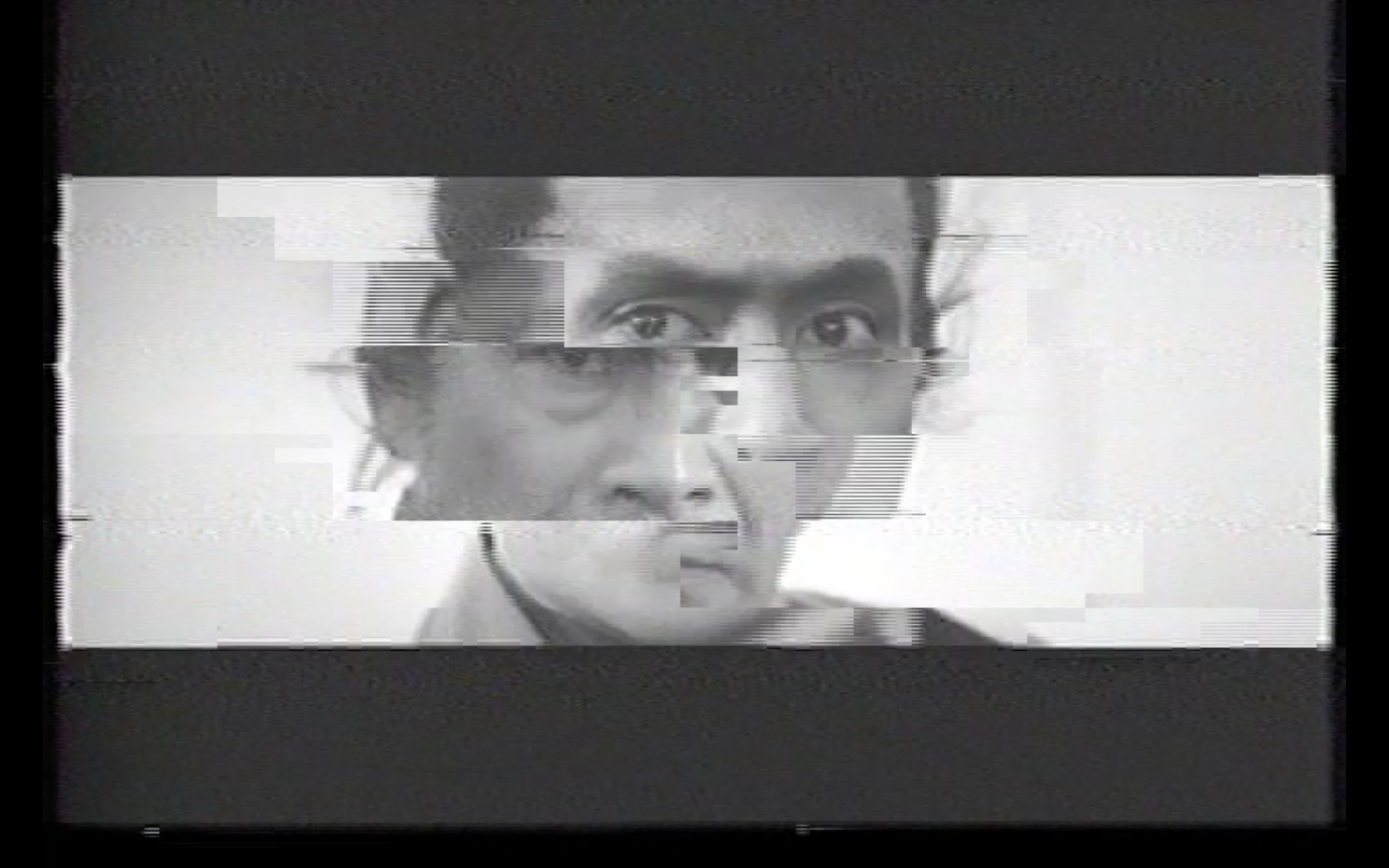
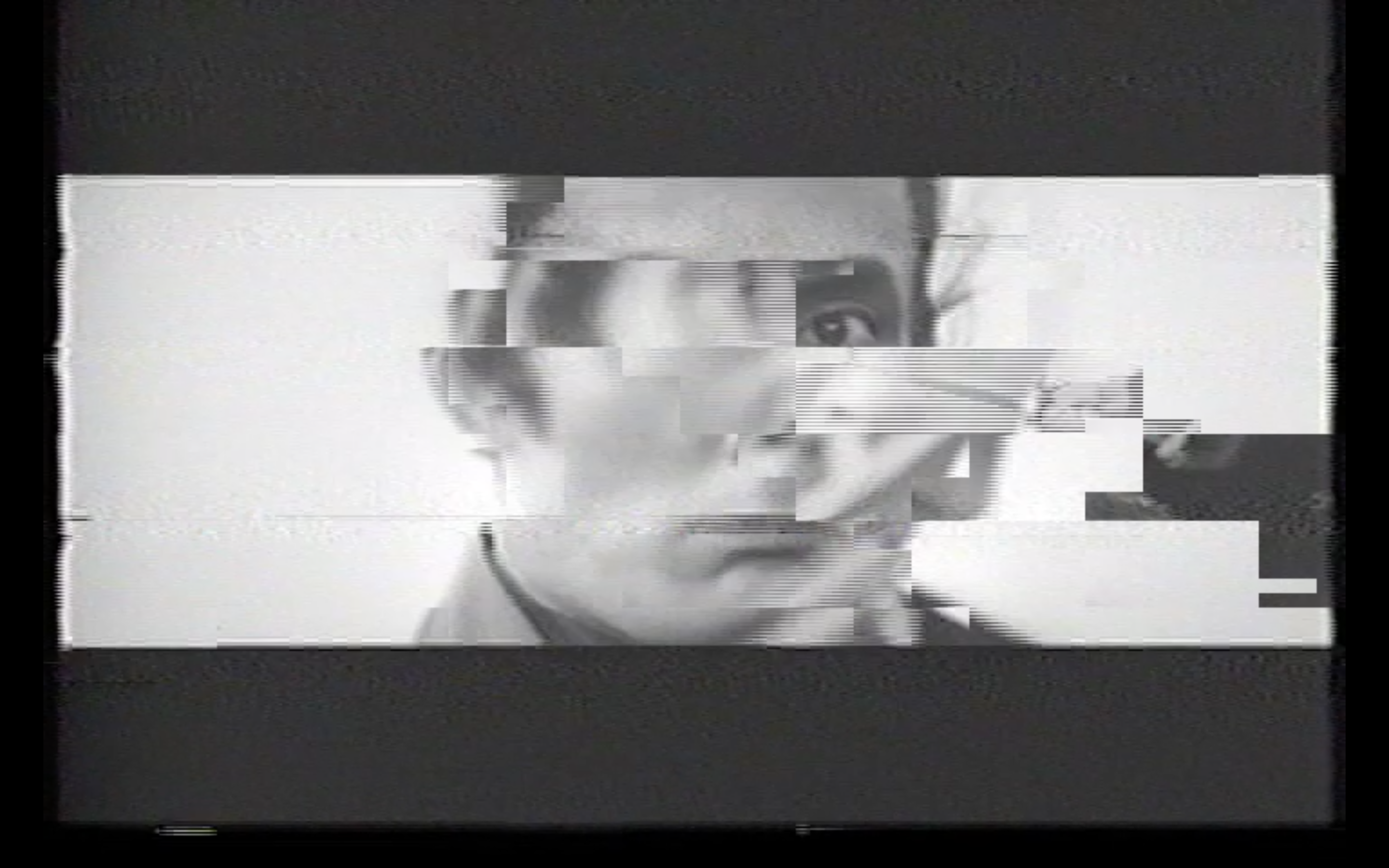
And figures can even be seemingly invisible when distorted by lost frames and rearranged pixels
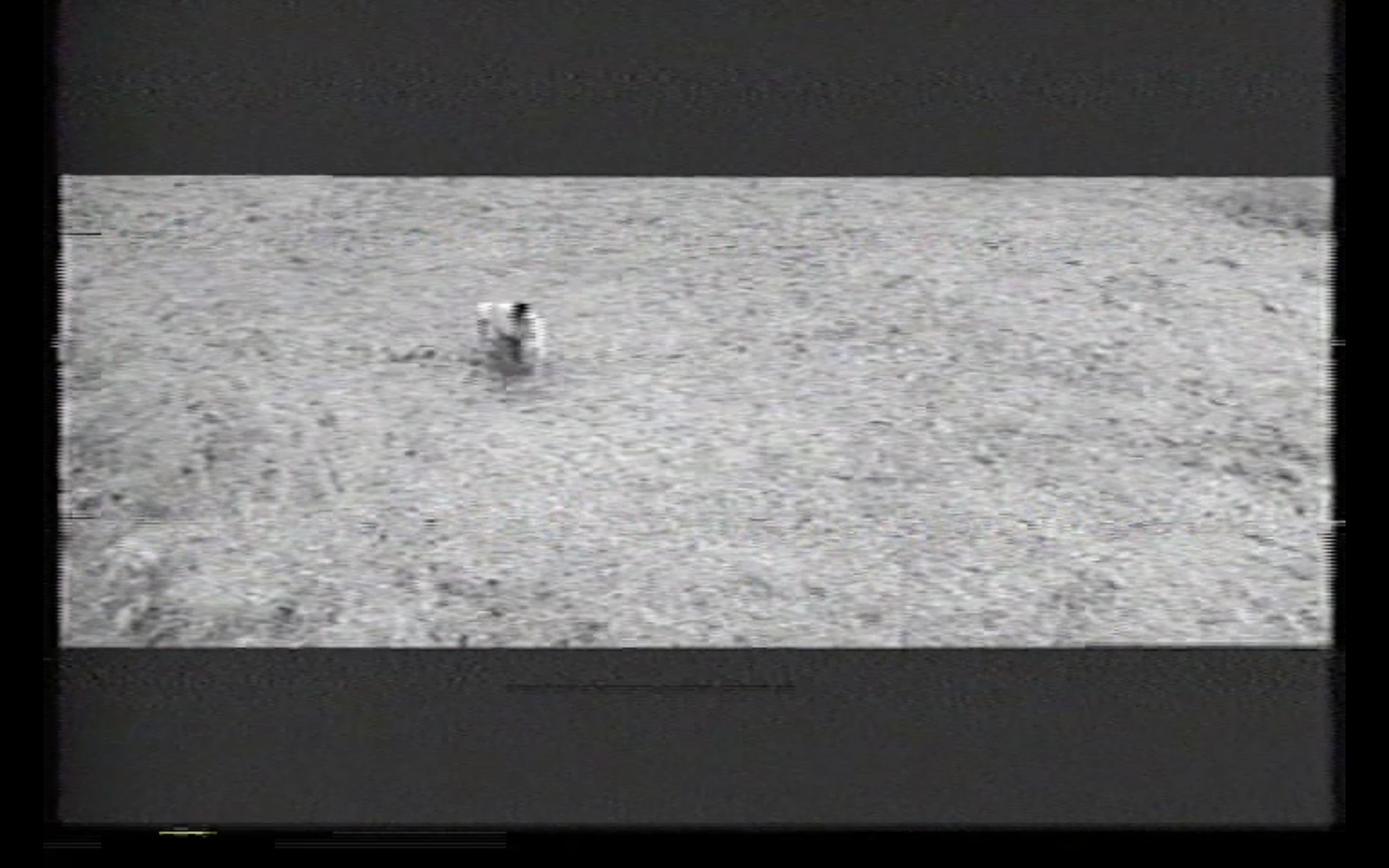

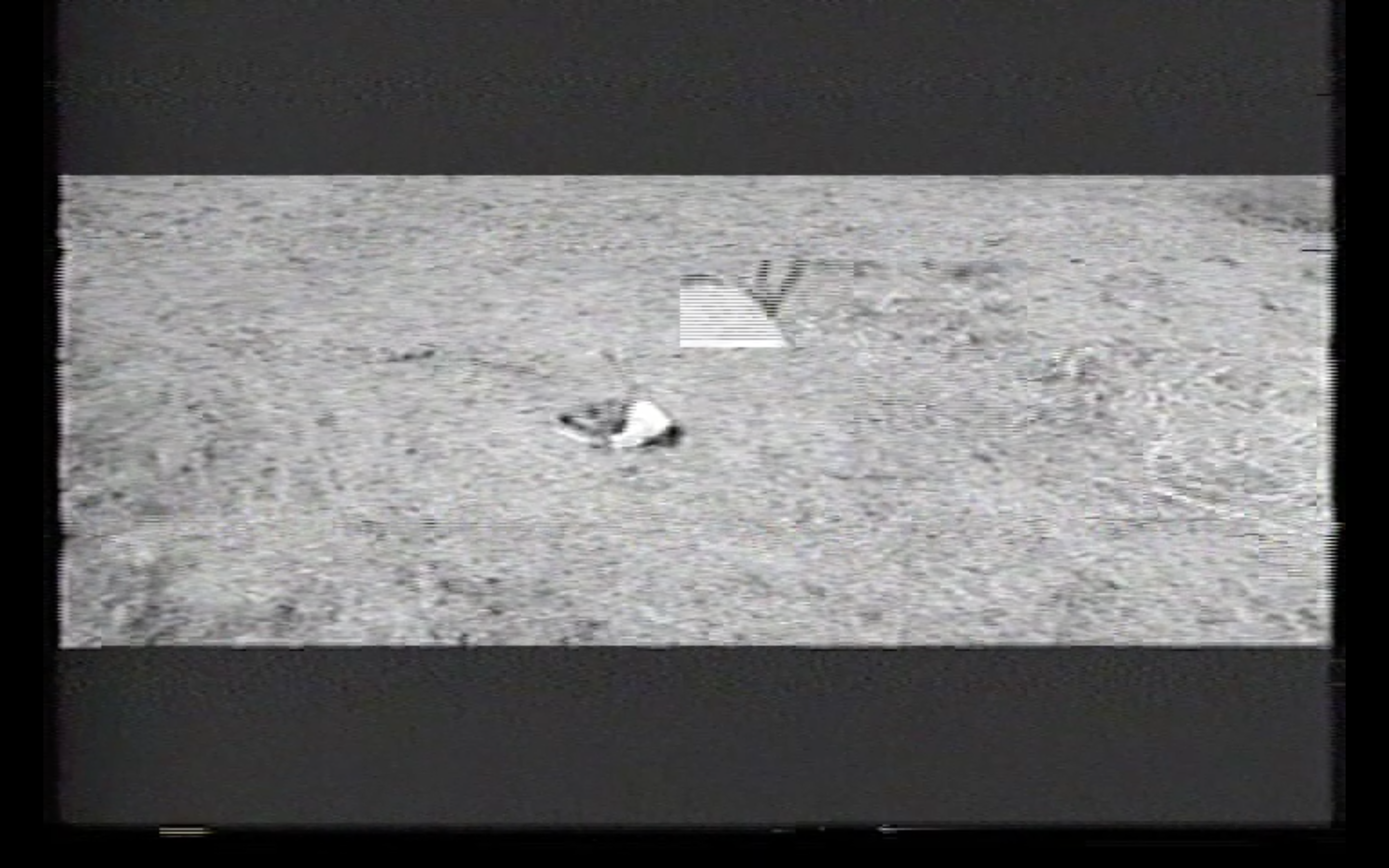

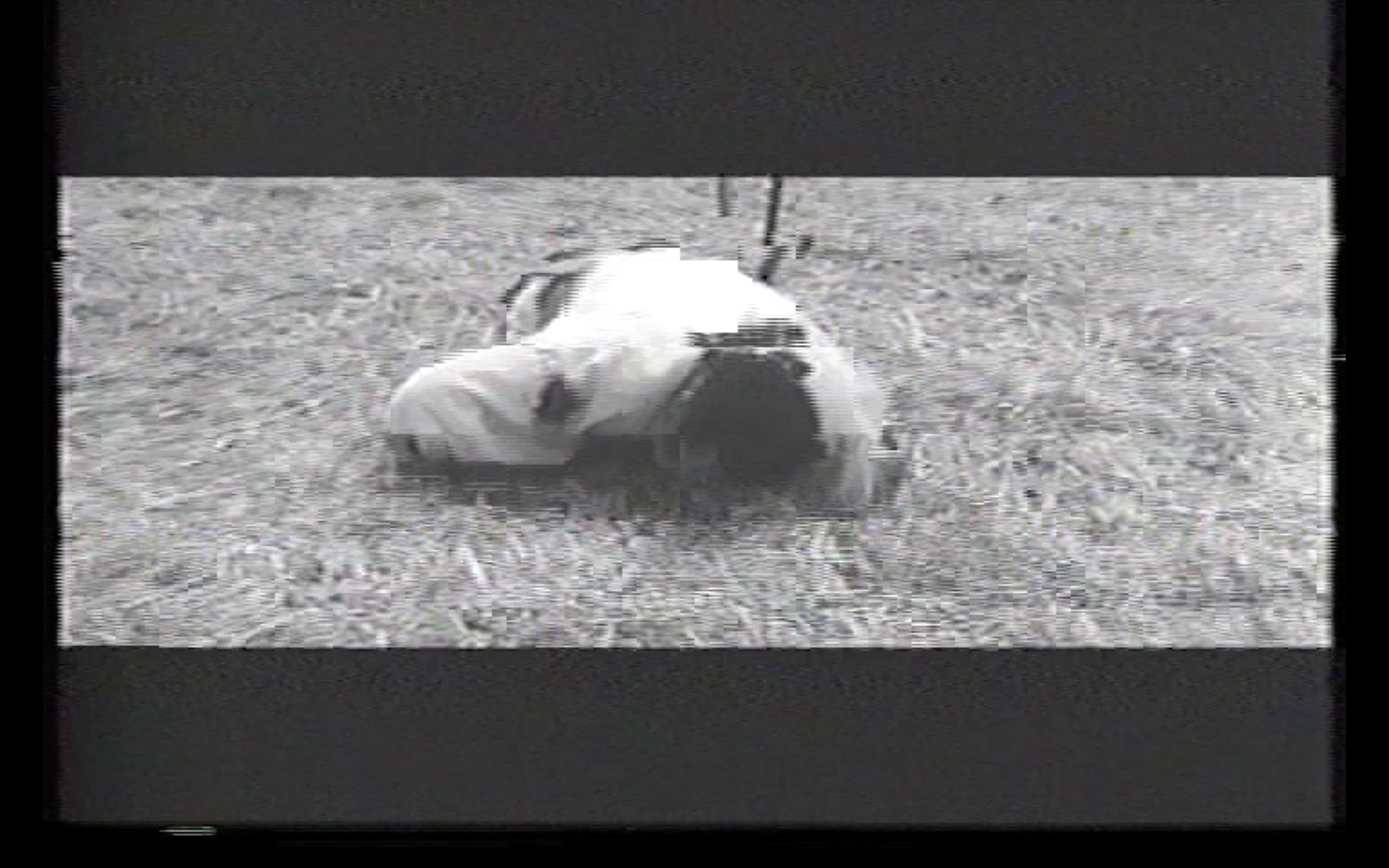
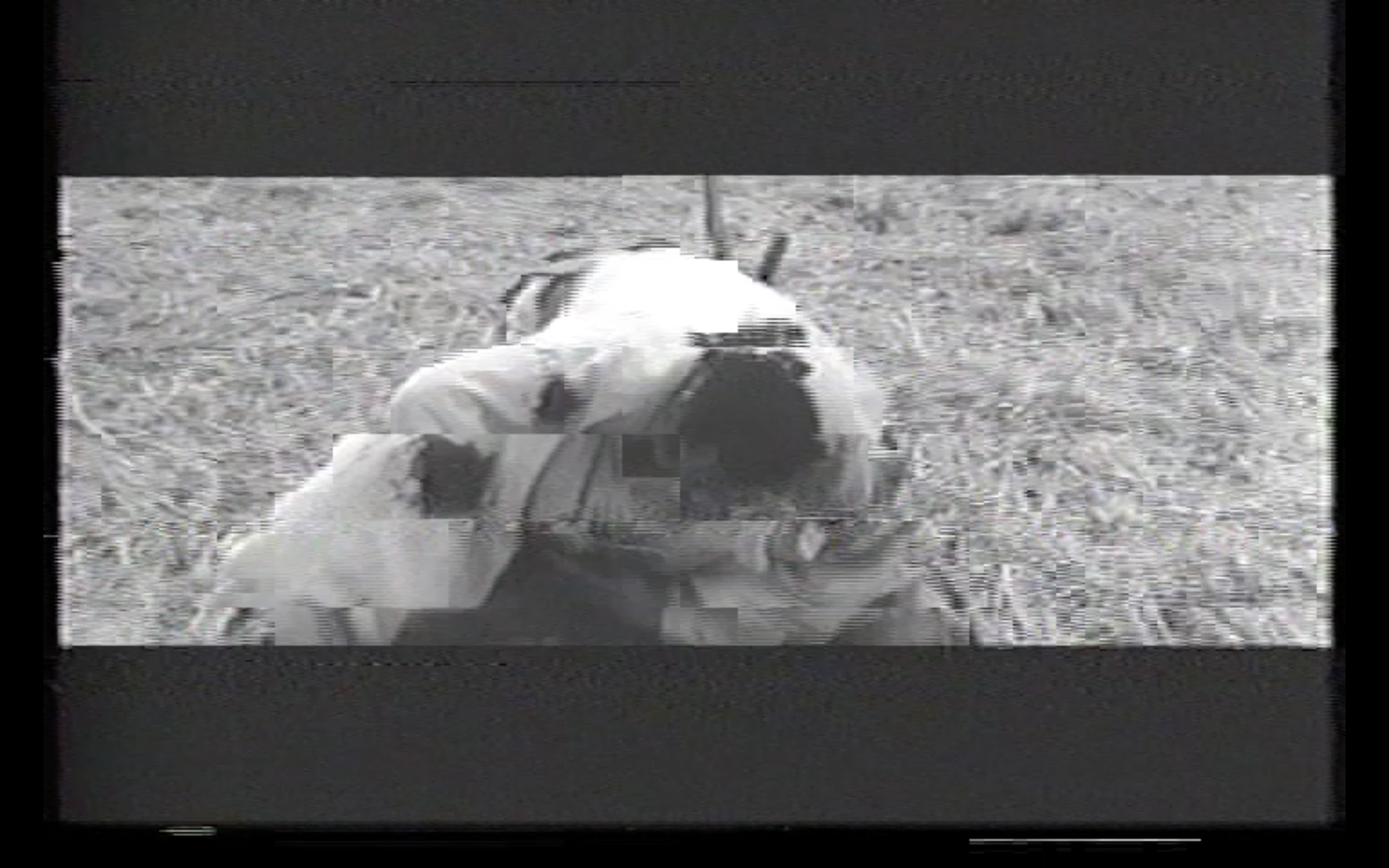
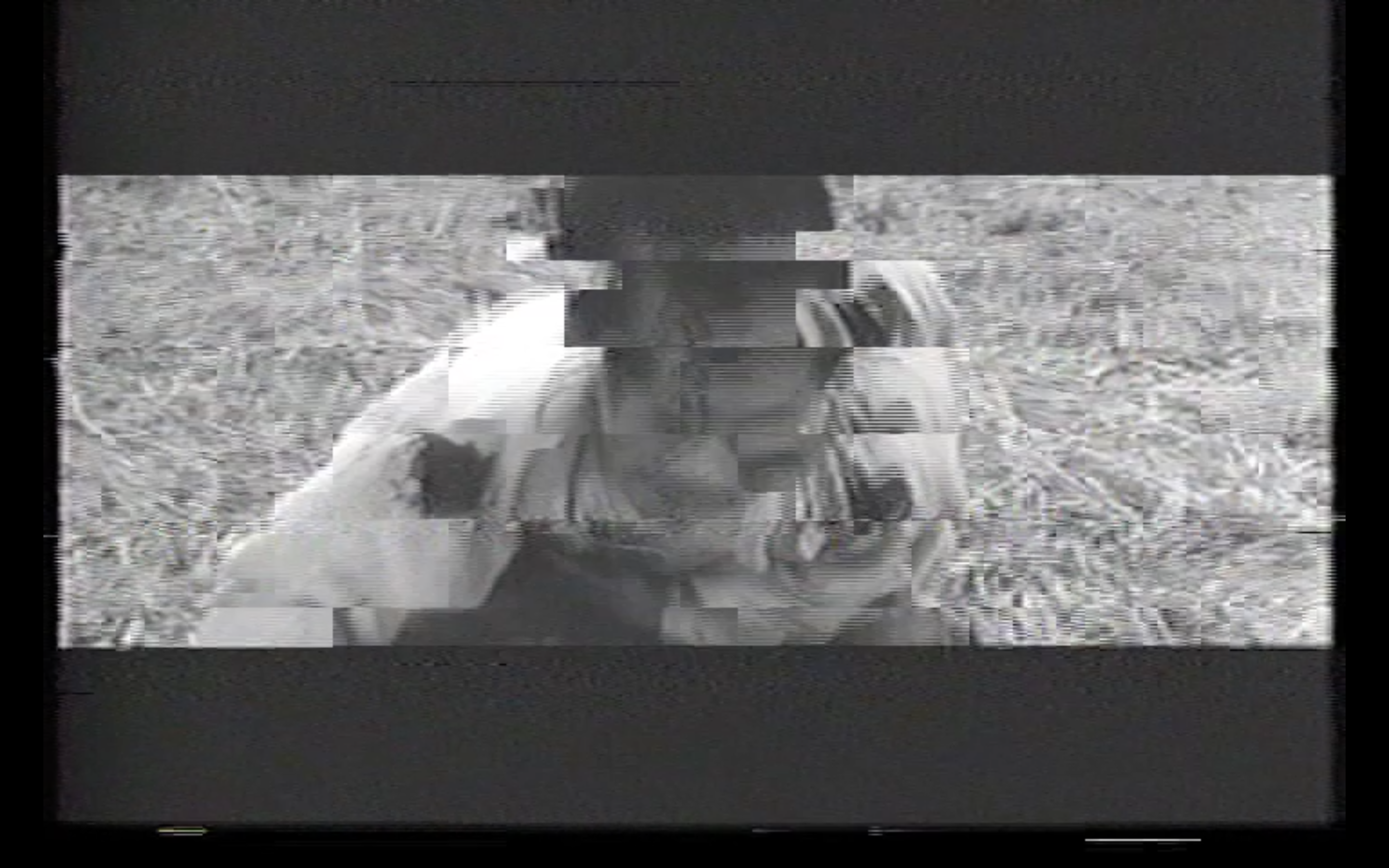


Like most Media Archaeology projects description above outlines an imaginary past form of information compression due to the missing or a lack of hard drive space. Something like this scenario did exist for digital media and very could be a possible outcome in an era of scare metals for making computer drives. The question of acceptable information loss is also a subject of research for engineers and programmers when devising compression standards and file formats such as mp3 or mp4.
The visual result of the Re-Winding of videotape for the sake of compression produces glitch media which are a novelty for their own sake. However, the more pervasive thing to notice with this type of glitching is that like the recordings for us to notice what is apparent in the ruined image. In Baudrillard’s writing on the disappearance of the real after the accumulation of so much junk information what remains detectable among the ruins is what is real.
One way of looking at these glitched media is that they are imaginary products which of course offer up new ways of looking at old content as new content. The other way is that these images although produced with a faux compression method are themselves generated because of videotape’s ability to compress materially and be accessed with a fluctuated picture. Namely that glitch which is normally considered an error or mistake of technology is actually a necessary function for technology to access media.
In the case of videotape, it is linear media and its contents can only be navigated through at will through two modes of winding. Fast winding which suspends all audiovisual signal from the video cassette as the reels spin at a high velocity. The other way to look at the live signal of the image content as it moves at faster rate. The faster rate causes glitching since the helical scanner of a VCR is meant for a specific rate. Anything faster will result in a loss of frames, shaky frame, warped lines, static for missing bits of information on the magnetic tape. It is also important to note that the audio channel is cancel as well. All of this information loss is required for the tape player to move through a videotape at higher speeds that are still perceptible. In this case the viewer who is also the controller of a VCR playback functions is perceiving video in a glitched format.
If familiar with the videotape content a viewer is looking for details which
indicates a scene in which to resume play. If a viewer who is unfamiliar with
the contents and unwilling to watch the tape at its actual duration, they are
looking at details for a point of interest in the glitch signal in which to
resume play. In the second example I think it is fair to say whatever triggers
the viewer to stop/play is revealing of the viewers ideology and what is
perceptually real. If the video cassette can compress material, I think it is
fair to say the fast-winding signal of videotape on screen compresses time for
the viewer as they experience video imagery which is degraded and shortened but
navigable.
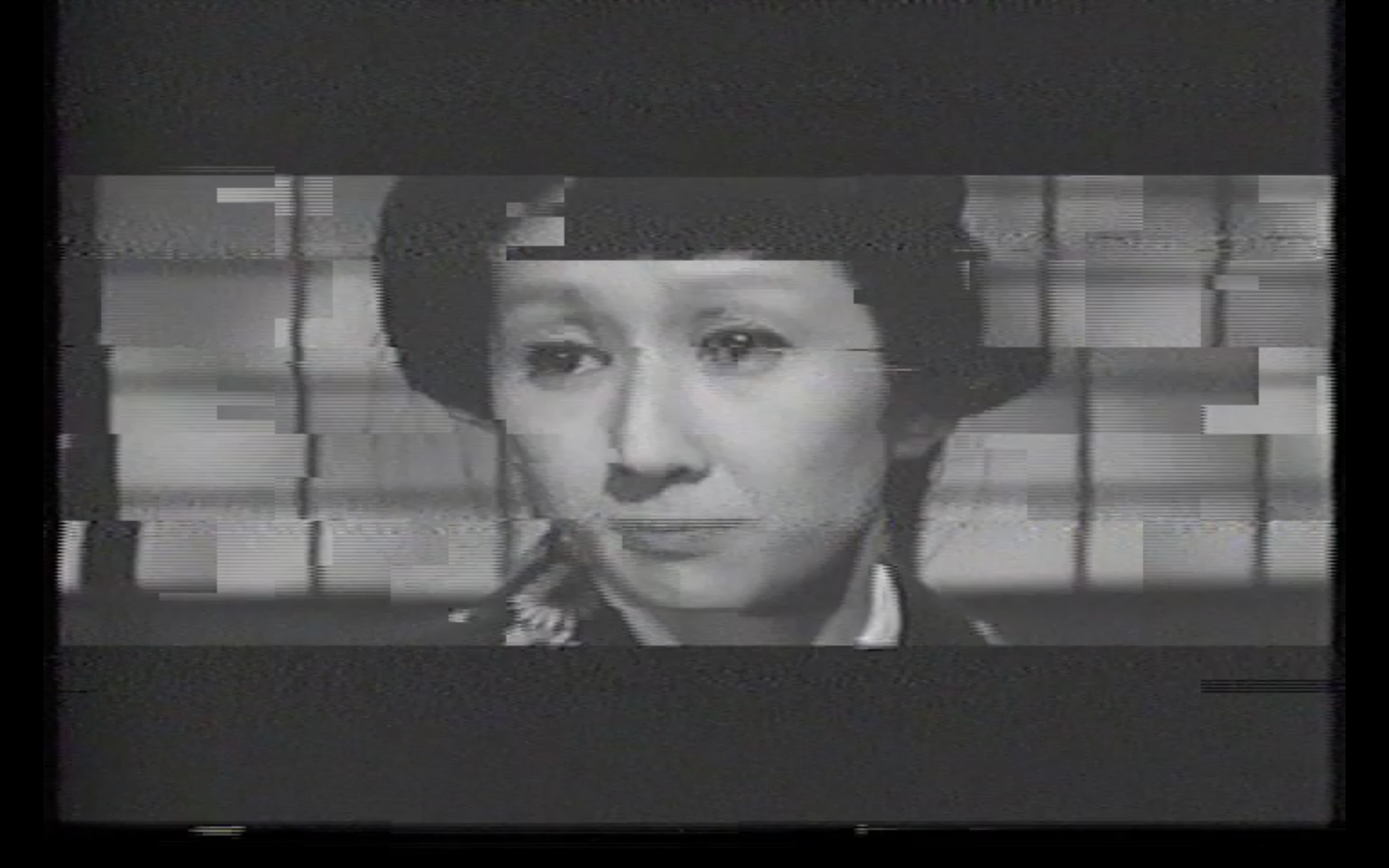
About Me ︎ Curriculum Vitae
Project Index︎︎︎
2023
Videosphere: You’re Always On A Screen Somewhere...
Brown Bunny
Inertia
2022
MAX Jitter Programming
FxR Versus AhR
Async Rolling
Always On
Enframing Rey
The Vidiot
Computer Home Entertainment
2021
Machine Learning: ATM
Pursuing Earth
THE LIBERTARIAN
Wiley World Wide Weather
ReWind Compressor
Discarding Earth
Being A Passenger
2020
Can(t) See Me Now!
ColorPress Brush
White Ball Flux Brush
THE APP
2019
PATS
2018
Ice Cream Drone
2015
Vanilla ISIS
2017
Invisible Foci
2014
Digital Synthesis Illustration
2013
Rood World
Synthesis Ilustration
2011
Verse
Master (Series)
Video Being
2010
Dance Aches
Bangalor
︎ macherno@buffalo.edu
︎ videoarchaeology
︎ michaelchenoff
︎ michaelchernoff
︎ videosignified
︎ michaelchernoff
︎ Videosphere
©2010-2023 Michael Chernoff